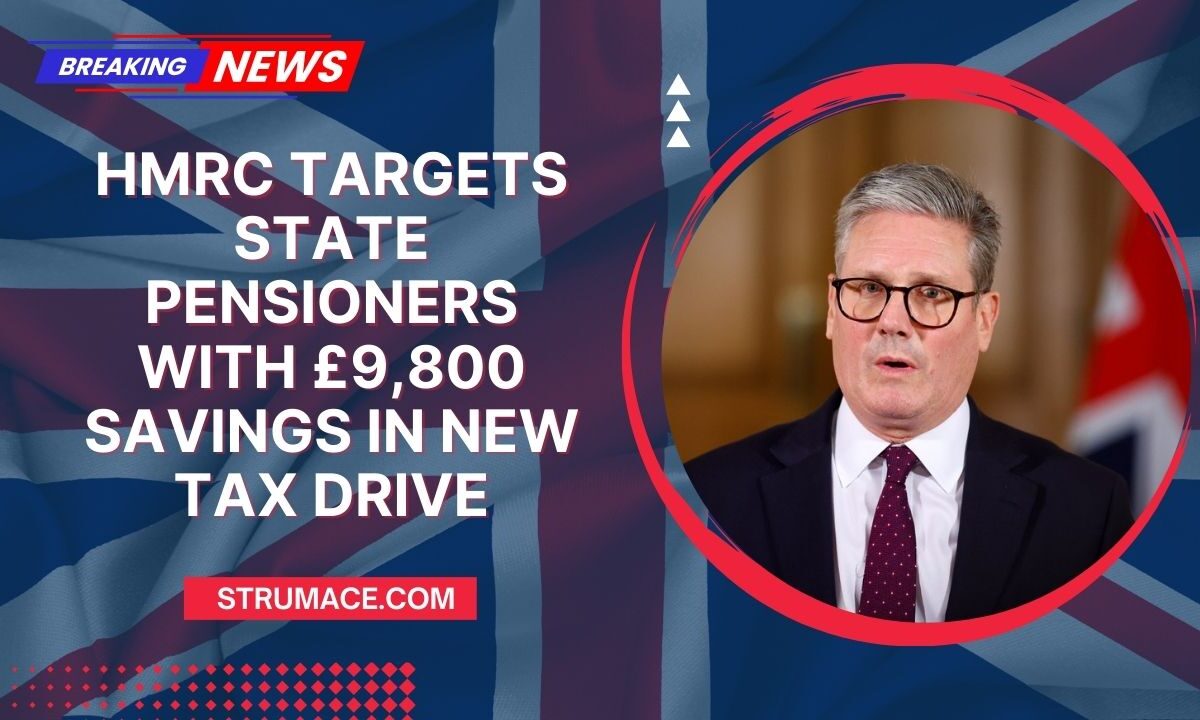A growing number of UK state pensioners are receiving unexpected tax demand letters from HMRC, triggered by their savings—even modest sums such as £9,800 could now tip them into tax territory.
This surge is due to frozen tax allowances, rising interest rates, and HMRC’s more proactive enforcement approach. Let’s break down what this means for retirees and how to stay protected.
What’s Driving the Tax Spike?
Several factors are combining to expose pensioners to savings interest tax liabilities:
- Frozen Personal Savings Allowance (PSA): Basic-rate taxpayers can earn up to £1,000 in annual savings interest tax-free, while higher-rate taxpayers only get £500. Additional-rate earners have no allowance. These thresholds haven’t changed since 2016.
- Interest Rate Climb: With higher interest rates, even relatively modest savings can push annual interest past PSA limits. For higher-rate taxpayers, just £9,800 in savings could trigger a tax bill.
- Fiscal Drag & Threshold Freeze: As state pensions and wages increase due to inflation—and allowances remain static—more retirees find themselves in higher tax bands unexpectedly.
- Increase in Simple Assessments: These automated tax demand letters have risen sharply, showing HMRC is more aggressively pursuing informal tax debts.
How It Affects Pensioners
| Pensioner Type | Savings Amount That Breaches PSA |
|---|---|
| Basic-rate taxpayers | Approximately £19,600 in savings |
| Higher-rate taxpayers | Just £9,800 in savings |
| Additional-rate earners | No PSA— every penny of interest is taxed |
Even pensioners who have built up cash buffers against cost-of-living pressures can unknowingly incur tax liabilities if their savings lie outside tax-efficient wrappers like ISAs.
Why This Matters—Especially for the Elderly
- Financial Strain: Many retirees rely on savings interest as a supplement to fixed incomes. A surprise tax bill can cause unexpected budget shortfalls.
- Awareness Gap: Many don’t realise how quickly savings can become taxable, especially if HMRC adjusts their tax code through simple assessment without notice.
- Rising Tax Base: As state pensions increase via the “triple lock” and thresholds remain frozen, more pensioners—who were previously exempt—are now finding themselves within the tax net.
What You Can Do to Minimise the Hit
- Use ISAs: Move savings into ISAs, where interest is completely tax-free (up to the £20,000 annual limit).
- Split Savings Wisely: Share savings between spouses or partners; each person has their own PSA.
- Track Interest Rates: Monitor your annual interest earnings to ensure they don’t exceed your allowance.
- Respond to HMRC Quickly: If you receive a simple assessment letter, contact HMRC promptly to clarify or challenge it if needed.
- Review Savings Strategy Regularly: Plan ahead to avoid breaching tax thresholds as rates change.
With HMRC intensifying its focus on savings interest taxation, more pensioners are finding themselves unexpectedly facing tax bills—even with as little as £9,800 in savings.
As allowances remain frozen and interest rates rise, the number of affected retirees will likely grow. However, by using ISAs, managing savings strategically, and staying informed about allowances, pensioners can reduce the risk of unexpected tax liabilities and better protect their retirement income.
FAQs
Why is £9,800 in savings suddenly a problem?
For higher-rate taxpayers, the £500 PSA means that interest beyond this is taxable—so even modest savings can breach the limit at current interest rates.
Do I have to file a tax return if I exceed the PSA?
Not always. HMRC can adjust your tax code to collect the owed tax. However, it’s best to confirm your position if you’re unsure.
Are ISAs still the best solution?
Yes. ISAs protect your interest from any tax, but remember to use your annual allowance effectively.
